Project Online is a cloud-based service that offers Microsoft’s rich set of project portfolio management (PPM) capabilities within the convenience of the Office 365 cloud infrastructure.
This article explores 7 simple ways to make the most of your MS Project Online experience.
Table of contents
- Why choose MS Project Online in 2024?
- Project management in Project Online: 7 best practices
- #1 Top 3 essential tips for Project Web App configuration
- #2 How to synchronize SharePoint tasks lists for Enterprise Projects?
- #3 What custom development options does Project Online have?
- #4 How to configure rollup of reporting data in Project Online?
- #5 How to use Microsoft Project Roadmap?
- #6 How to build a Project Online project status report?
- #7 How to get all benefits of project portfolio management?
- Which Project Online best practice should you use right now?
Why choose MS Project Online in 2024?
As cloud-based PPM software, Microsoft Project Online helps you start projects quickly and execute them efficiently. This tool contains built-in custom templates with industry best practices so that you can get started immediately.
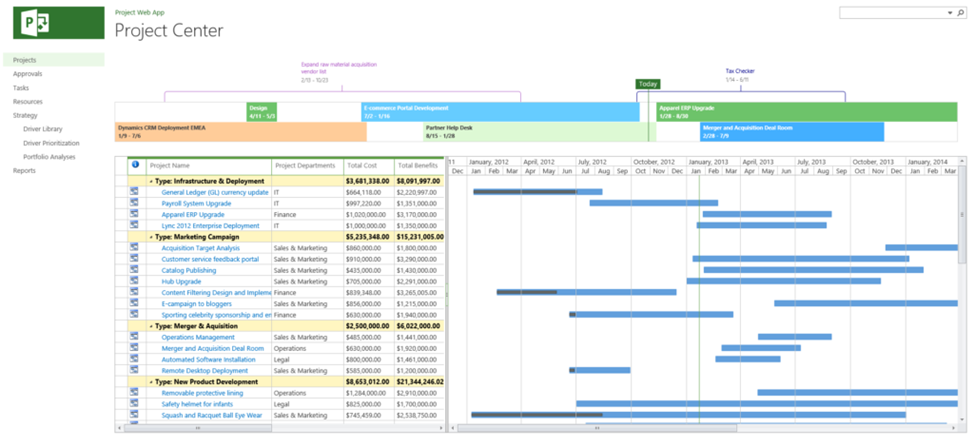
With familiar scheduling features such as Gantt charts and drop-down menus, this project management software simplifies the planning process and reduces training time for project managers:
- Create easy-to-share reports that contain all the data you need, from task combustion charts to financial metrics.
- Quickly review all your project activities, from tasks to upcoming milestones, set up timelines, and easily share them with project implementers.
- Combine information on different projects and share it with project promoters and teams.
With all these features, Project Online is one of the best project portfolio management platforms to use in 2024.
Project management in Project Online: 7 best practices
Project Online best practices can change over time within a business or industry when new technology or ideas surface. But for now, there are our top 7 best practices for using Project Online.
#1 Top 3 essential tips for Project Web App configuration
Not having to deal with deployment, setup, and hardware and software configuration is one of the advantages of using a cloud-based service like Project Online. But it still requires adjustments to deliver the best performance compared to an on-premises deployment.
Below are areas that potentially impact the overall performance of your Project Web App site.
#1.1 Security permissions modes: choose between SharePoint or Project Server
By default, the Project Online instance comes with SharePoint Permissions mode.
When possible, keep the default SharePoint permission mode for better overall performance. If you must change it to Project permission mode, limit your customization as much as possible. A comparison between each setting can be found on TechNet.
FeatureSharePoint permission modeProject Server permission modeUse the same set of security groups for PWA and SharePoint Server✓Permissions inheritance for Project Sites and Project Web App✓Direct authorization against Active Directory security groups✓Claims-based authorization✓✓Manage authorization by role-based groups✓✓Flexible and scalable✓✓User delegation✓Ability to secure work resources✓Impersonation✓Utilizing the Resource Breakdown Structure for security filtering✓Custom Security Categories✓
#1.2 Create a Project Site and configure it properly
Project Sites can be configured at each level of the Enterprise Project Type (EPT).
Project Site creation is turned off by default. Choose the option to build Project Sites manually rather than automatically if your company uses them. Approximately 2,000 maximum sites are allowed for SharePoint Online. The quantity of the subsites within sites can be defined within each site group.
You can specify the site collection to establish new Project Sites by using an EPT. This will allow you to create a Project Site for each Project as you can span them across multiple site collections.

The first publishing experience is sped up by avoiding creating unnecessary sites and content.
Recommendation: choose the option to create Project Sites manually rather than automatically if your company uses them. This accelerates the initial publishing process and prevents the creation of pointless websites and material.
#1.3 Sync user permissions for your Project Site
Users’ Permission can be set at each level of an Enterprise Project Type. By default, this parameter is turned off. If your deployment fits the following description, disable the Project Site permission sync option:
- You have more than 1,000 projects
- You have more than 1,000 projects that require a Project Site
- You need to be able to access the bulk of the Project Sites with a variety of your resources
- Project websites are built outside of the standard site collection (sync is disabled)
Consider the following options for regulating the permissions on your Project Site:
- To boost the speed of Project Publish and Project Detail Pages, consider disabling permission sync for your Project Site if your project teams have minimal turnover. Every time a project team member joins or departs, you will need to grant or withdraw authorization to your Project Sites manually.
- If all users in PWA require access and it corresponds to your current group permissions, think about setting up your Project Sites to inherit from the parent PWA site.
- If certain roles correspond to site access, create one or more groups that correspond to those roles (perhaps using the same groups if you have Group sync enabled) and allow those groups access to the Project Site.

#2 How to synchronize SharePoint tasks lists for Enterprise Projects?
Each Enterprise Project Type level has a configuration option for the SharePoint Tasks Lists.
To increase the speed of project publication, this feature is, by default, disabled. The ‘Sync SharePoint Task Lists’ option was intended for use with small project plans.
If the project contains many tasks, it will take some time to sync them on publish because each task needs to be changed one at a time. For instance, syncing up to 500 task project plans to the SharePoint task list requires several minutes. Even though the queue job is on a separate correlation and does not block the saving and editing of the project plan, we recommend not enabling the ‘Sync SharePoint Task Lists’ option. Additionally, we advise only synchronizing projects with fewer than 250 tasks.
By default, this option is not selected. SharePoint Tasks Lists Sync should only be enabled if your users require it for each EPT. In order to set up this option:
- Select Enterprise Project Types from the Project Web App Settings menu
- Decide which EPT you want to make the adjustment to
- On the ‘Synchronize’ page of the EPT settings, click ‘Sync SharePoint Tasks Lists’.
#3 What custom development options does Project Online have?
Project Online has three online API sets: Client-side Object Model (CSOM), JavaScript Object Model (JSOM), and Representational State Transfer (REST).
- The .NET CSOM implementation is the preferred interface when developing Windows applications that interact with Project Online tenants.
Typical environments for user-centric applications include Windows desktops and Microsoft Surface devices. Back-end applications written with .NET CSOM can connect to other servers for business logic and external data sources to Project Online. Retrieval requests to Project Online use a LINQ-like query system that offers several enhancements over basic retrieval functions.
- The REST/OData model provides HTTP-based communication; this interface is recommended for applications in non-Windows environments.
Communication endpoints are the objects in the Project Web Application (PWA) site. The OData interface is recommended for developing custom Project Online Reporting Add-ins as well as for developing Excel/Power BI-based reports.
- The JavaScript Object Model (JSOM) interface provides cross-browser support for Project Online Add-ins.
An add-in is a web application that is stored in the Project Online tenant. When a user wants to run an add-in, the code for the add-in downloads and runs in the browser on the user’s machine.
The prerequisites to set up development environments are as follows:
- .Net Framework 4.0 or newer — use the complete framework
- Visual Studio 2013 or newer — any edition is acceptable
- SharePoint Client Components SDK — Project Online and Project Server sit on top of SharePoint and SharePoint assemblies. The SharePoint Client Components are included in Visual Studio Professional and Enterprise editions.
- A Project Online account — this provides your Project Online Development site access
- Projects on the Development site that are populated with information
#4 How to configure rollup of reporting data in Project Online?
Many organizations need reports that retrieve Tasks and Assignments data.
The problem is performance issues, especially in organizations that have a lot of Project Online reporting data. Microsoft acknowledged that not all organizations would need the data to be reported daily, so they introduced an option to roll up the data on a broader time frame (such as weekly or monthly). This can significantly improve report performance by reducing the number of records you need to download.
For example, instead of needing to retrieve 300,000 records when it’s set to daily, setting it to monthly could reduce this to a much lower number, such as 10,000 records.
Another benefit of rolling up time-phased data is that it’s much quicker to publish projects since data won’t need to be broken down by the day when publishing.
In some cases, it can also improve the experience of interacting with Project Detail Pages. Organizations that have complex workflows could also benefit from this feature, where users will see performance improvements when publishing the projects.
How to change this setting:
- On the Project Online home page, select ‘Server Settings'
- On the Server Settings page, in the Enterprise Data section, select ‘Reporting’.
- On the Reporting page, in the Time-phased Data section, select the option you need: ‘Never’, ‘Daily’, ‘Weekly’, ‘Monthly’, ‘By fiscal period’
#5 How to use Microsoft Project Roadmap?
Microsoft Office 365 provides a feature called Roadmap within the Project App.
This allows you to present projects from various Project Online sites and Azure Boards in a straightforward bar chart. This is to give you a better overview.
https://www.youtube.com/watch?v=kC1oZj0nOsc
In the first version of Project Roadmap, it is only possible to display existing projects. You can retrieve summary tasks, tasks, and milestones from Project Online.
From Azure Boards, you can take over Epics, Features, Requirements, etc., depending on the template used. You can create new roadmaps in Office 365 in the Project App by selecting Roadmap:

Next, you have to:
- Add projects as rows
- Select the project details, i.e., the bars
To this end, you create a link to Project Online or Azure Boards by entering the respective URL.
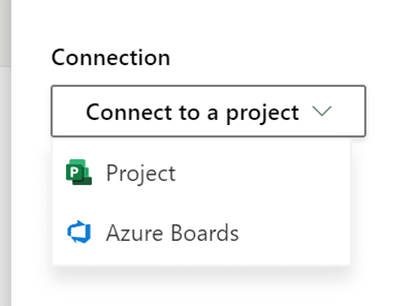
In the next step, you select the elements you would like to present as bars. However, a list of tasks or Epics will only appear after you have entered three letters.
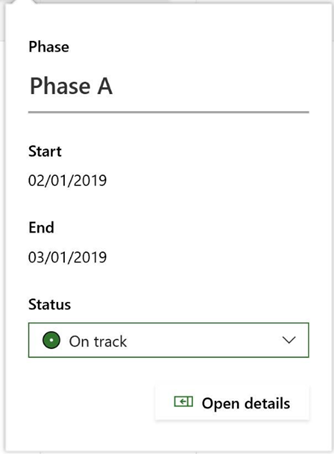
The presentation of the bar is always the same, regardless of the source. What data is transferred:
- Name
- Start date
- End date
It is possible to change the names of projects and bars but not the dates. You have the option to change the status and, thus, the colors of the bars and the milestones. It’s not currently possible to link the status to properties in the source project via the user interface.
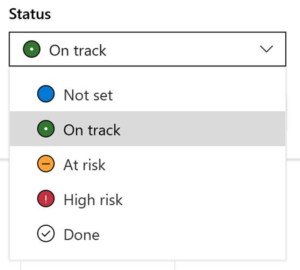
You can move projects up or down but not their bars. The presentation of the bars is recalculated each time to ensure optimal use of the available screen space.
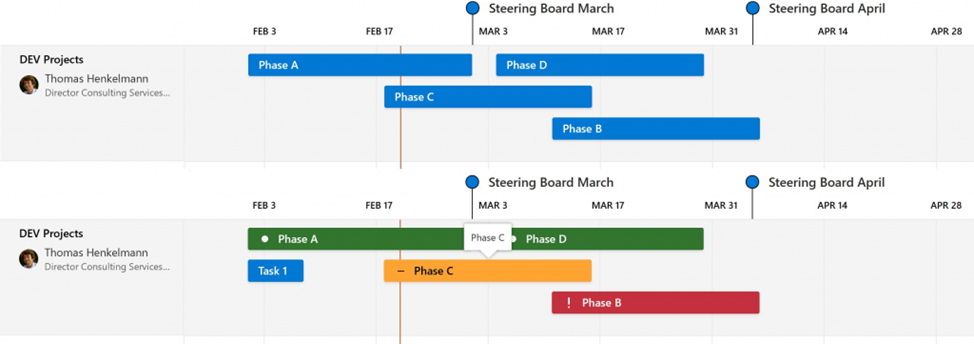
The structure of the source project has minimal impact on the presentation. This may not matter too much, as you will very likely integrate only summary tasks.
#6 How to build a Project Online project status report?
Project Online is an excellent tool for managing a portfolio of projects. For executives, PMOs, and project managers, having one place to view the overall project status is an excellent feature.
However, the out-of-box views are limited and only provide some of the information you may be looking for in a format that can quickly give the status of your project.
You can use Power BI or Excel reports/dashboards to achieve these goals.
However, these options either may not be accessible to you, or you may encounter limitations such as the following:
- Power BI requires additional licensing (though Power BI Desktop is free, you still need to manually refresh the Power BI report and share it with the PMO)
- Excel Online does not allow you to build complex reports (though you can use Power Query with the Excel client to create sophisticated reports, you can’t refresh them on the browser – you need to update them manually on demand from the Excel client)
- SSRS is not directly supported in Project Online.
#7 How to get all benefits of project portfolio management?
If you want to improve your reporting capabilities and empower your PMs and decision-makers with internal visibility of the project data, consider adopting a full-grown project portfolio management tool like PPM Express.
Unlike the many alternative solutions, PPM Express has the unique benefit of providing the user with true customization options for every single detail in your portfolio.
PPM Express is uniquely equipped with close to ten years of experience in providing small to very large organizations with exactly the tools they need to create transparent, maneuverable, and vibrant portfolio management models.
We also take pride in providing our clients with free and competent support from the point of deployment to the point of complete success.
The significant benefits of adopting PPM Express include:
- Providing a holistic PPM experience by integrating all agile and modern project management tools across Azure DevOps Boards, Jira Software, Microsoft Project Desktop, Microsoft Planner, and Monday.com into a single view.
- Better decision-making with boardroom-ready roadmaps.
- Minimizing risk and maximizing resources with predefined PowerBI reports (over 150+ reports)
Adopting PPM Express lets you give your PMOs and executives project transparency and flexibility in your Project Online ecosystem. As a result, you foster a collaborative environment where decision-making is easier and more fruitful.
It also minimizes the risks to individual projects regarding business impact, maximizes human resources efficiency, and allows for the repetitive use of the proven successful project in future initiatives.
Which Project Online best practice should you use right now?
Like any cloud service running on the internet, Project Online requires specific tuning to deliver the best performance compared with an on-premises deployment.
Although Microsoft is constantly improving the system to speed up its performance, there are some steps you can take in the meantime to obtain an excellent experience of using MS Project Online:
- Use SharePoint permission mode when possible.
- Only turn on the features you will actually use.
- Keep pages and customization as simple and lightweight as possible for faster page load times.
- Use server-side filtering or export Odata feeds data to a SQL Server database for more reporting flexibility.
- Choose a reporting granularity option that uses the least amount of data that satisfies your reporting needs.
And if you’re looking for one single source of truth with a defined PPM framework, automated orchestration across projects, easy capacity planning, and clarity across your entire project portfolio, PPM Express is here to help.


